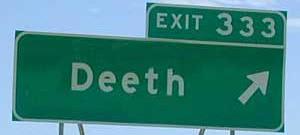A little too simple, I think; I tend to make any kind of political numbers too complicated but I'd like to see the down-ballot reflected somehow. But Charlie Cook argues:
While other data such as the results of senatorial, gubernatorial, congressional and other local races can help fine tune the exact partisan tilt of a particular district, those kinds of results don't allow a comparison of districts across state lines. Only Presidential results allow for total comparability.
And Charlie's math is the accepted unit of measure. It looks at the last two elections and Cook just released the new numbers. The 2000 dead heat rolls off and the decisive Obama win takes its place.
Iowa's numbers don't change a lot, because we behaved like the rest of the nation (we Iowans prefer to think of it as the nation following our lead): a razor thin Gore popular vote win in 2000, a narrow Bush win in `04, and a solid Obama win in 2008. The state as a whole is D +1, meaning we voted one point more Democratic than the nation as a whole.
Cook's ranked list runs, inexplicably in a Democratic era, from most to least Republican. I'll correct that in my analysis and note that Dave Loebsack's (and my) 2nd CD is Iowa's most Democratic at number 132, with a PVI of D +7. That means that, in 2004 and 2008, we voted 7 points more Democratic than the nation as a whole. Bruce Braley's adjacent 1st CD is number 151 at D +5.
Steve King's 5th District is an R +9 and the 318th most Democratic in the nation. Put Cook's way, it's the 118th most Republican, meaning there's 117 districts that are even worse. Still, there's a silver lining; W carried it by 21 points in 2004 but McCain only managed to win by ten.
It gets most interesting in central Iowa, where the two incumbents most likely to be paired in redistricting--Leonard Boswell and Tom Latham--are evenly matched. Boswell's 3rd District is the 186th most Democratic at D+1, while Latham's 4th is ranked as EVEN at number 195. Remember the definition: this means Latham's district is nationally average, not that it's evenly split. And nationally average for 2004/2008 is 51.3 percent Democratic (because Obama won by more than Kerry lost).
Still, this is turf that could swing either way, making the candidates, rather than the parties, the key element. Factors like energy and health (Boswell's attendance is OK this session, so far) and personal style (low key Latham vs. Good Ole Boy) are going to matter. Both parties will need their strongest possible candidates.
Splitting this down to a county level, The People's Republic of Johnson County is a D +16. The closest fit politically, culturally and demographically is just up Highway 151 in Tammy Baldwin's Madison-based Wisconsin 2 (a D+15). And that's nowhere near the top Democratic turf; the urban minority districts in New York, California and Chicago max out at about D +40.
But on the other end, and this surprised even me, Sioux County at R +32 is more conservative than any congressional district in the county. I knew they were conservative up there, but what makes them THAT much more conservative than everyone else? I mean, I know there's a long Dutch Reformed and conservative tradition up there, but that's a very different culture than Southern Baptist, racially tense white rural Alabama 6 (R +29 in a map carefully drawn to place black voters in another district) or Mormon rural Utah 3 (R +26). And while parts of western Iowa have people few and far between, it's nothing like the Texas panhandle 13th (R +29) or depopulated western Nebraska 3 (R +24).
Those types of districts fill Cook's top ten, and empty ranch counties are about the only places that top 80 percent GOP, but Sioux County is growing and becoming an exurb. Those kinds of congressional districts top out at about an R +20, not R +32. Put another way: when you look at my community's D +16, you see the exact same kind of community in the neighboring state. When you're looking at a place as Democratic as Sioux County is Republican, a D +32, you're looking at places that resemble absolutely nothing in Iowa: the Hispanic Chicago district, the black Cleveland district, and Tip O'Neill's old district in Boston.
Only thing I can conclude is that while Iowa's crazy liberals may be crazy liberals, we're not nearly as krazy as our krazy konservatives.

No comments:
Post a Comment